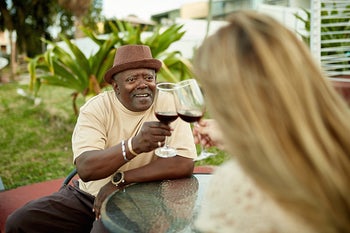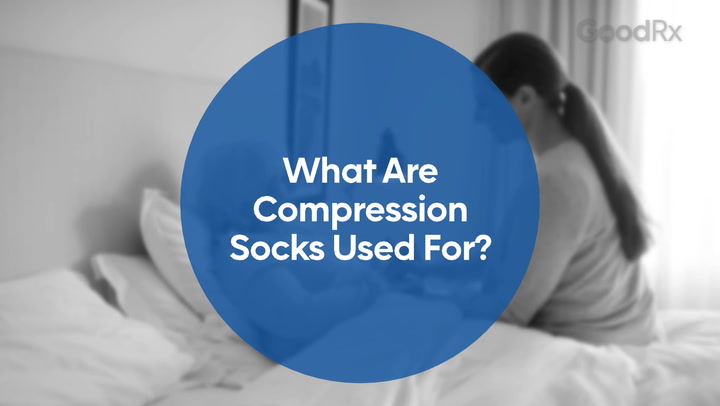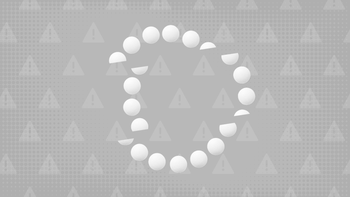
What Is Orthostatic Hypotension, and What Can You Do About It?
Key takeaways:
Orthostatic hypotension is a drop in blood pressure that occurs when someone changes positions. It often causes a lightheaded feeling when you stand up.
Many different things can cause orthostatic hypotension, such as medications, dehydration, and certain medical conditions.
There are some simple steps you can take to reduce episodes of orthostatic hypotension and stay safe if you have it.

Have you ever stood up and felt lightheaded or dizzy? Maybe you had to sit back down because you thought you were going to pass out. If it happens often enough, you might start to wonder if something is wrong.
Orthostasis is a normal body reflex that happens when you move from a lower to a higher position. This includes when you sit up in bed or go from sitting to standing. Your brain tells your heart and blood vessels to adjust to these position changes. These adjustments keep blood flowing smoothly to your brain.
Orthostatic hypotension happens when your blood pressure drops too low with these position changes. This results in a slight lag in blood reaching the brain, which causes a dizzy or lightheaded feeling. Orthostatic hypotension is a drop of at least 20 points in systolic (or 10 points in diastolic) blood pressure within 3 minutes of standing. It is not a disease but a symptom of another problem.
Find out what might be behind your symptoms and when you should see a healthcare provider about them.
What are the causes of orthostatic hypotension?
The most common causes of orthostatic hypotension are diseases, dehydration, medications, and being too hot:
Heart and vascular disease: When you stand up, your heart beats faster, and your blood vessels squeeze to keep blood flowing to your brain. Cardiovascular diseases can interrupt this reflex. Heart disease can make it so that the heart cannot speed up as much as it needs to. And vascular disease can prevent the blood vessels from squeezing properly when you stand up.
Neurologic disease: The brain and nerves also play a role in controlling blood pressure. Your brain senses when you move and sends a message through your nerves to your heart and blood vessels. So diseases of the brain and nerves can impair their ability to send important messages to the heart and blood vessels. This can happen in conditions like Parkinson’s disease and neuropathy.
Dehydration: When your body doesn’t have enough water or certain electrolytes, you have less blood circulating in your blood vessels. This can happen when you don’t drink or eat enough. It can also happen when you lose body water due to sweating, vomiting, or diarrhea. Many people have orthostatic hypotension when they’re sick with a stomach virus.
Overheating: Your blood pressure can also drop if you become very overheated. This causes the blood vessels in your body to dilate in an attempt to bring blood to the surface to cool off. Dilated blood vessels cannot effectively squeeze to adjust blood pressure.
Medications: Some medications can lead to orthostatic hypotension. Common examples include heart and blood pressure medications, such as beta blockers and diuretics. Beta blockers prevent your heart rate from speeding up when you stand, and diuretics can cause your body to lose water and electrolytes. Medications that can treat an enlarged prostate, called alpha blockers, can also change your body’s ability to change blood pressure. These are just a few examples of many medications that can sometimes cause orthostatic hypotension.
How do I know if I have orthostatic hypotension?
Most people can tell if they have orthostatic hypotension because they feel light headed when they sit up or stand. This dizzy feeling usually goes away after you give your body a few moments to adjust, but not always. Sometimes, you have to sit or lie down to make the feeling stop. Some people also feel their heart beat faster or like they are breathing harder with these position changes. You may even feel like you could pass out. In this way, orthostatic hypotension can cause falls and serious injuries.
Your healthcare provider can diagnose you with orthostatic hypotension by monitoring your blood pressure and pulse. This process involves taking several vital sign measurements in different positions: lying position, sitting, and standing. They do this slowly, allowing 2 to 3 minutes for you to adjust between each position. It is best to have this done at a medical office, especially if you are experiencing symptoms that may suggest a problem.
How is orthostatic hypotension treated?
Treatment of the underlying problem: Healthcare providers treat orthostatic hypotension by finding the root cause, so treatment is different for everybody. For dehydration, drinking water or giving fluids through an IV can help. If an underlying disease is causing your symptoms, medications or procedures to treat that condition may help.
Medication change: As mentioned, medications can be the source of orthostatic hypotension, especially if you take many medications. Your healthcare provider can review your medications and any non-prescription medications or supplements to help identify any culprits. Sometimes, adjusting the dose of a medication can improve or resolve orthostatic hypotension.
Lifestyle changes: For people who have ongoing symptoms that are not curable, some daily habits can help:
Stay hydrated.
Change positions slowly, and allow a few seconds to adjust after each position change.
Consider wearing compression socks or stockings, which squeeze your legs. This helps keep your blood pressure more even when you stand up.
If you feel dizzy when you stand up, sit back down. Sometimes, you may need to lie down.
The bottom line
Orthostatic hypotension causes low blood pressure with changes in position. It is often a symptom of an underlying problem. Since there are many things that can cause orthostatic hypotension, getting help from your medical provider can help you identify the cause and make a treatment plan. Until your symptoms improve, being prepared for episodes of orthostatic hypotension when you change positions can help you prevent falls and keep you safe.
Why trust our experts?


References
The Consensus Committee of the American Autonomic Society and the American Academy of Neurology. (1996). Consensus statement on the definition of orthostatic hypotension, pure autonomic failure, and multiple system atrophy.










